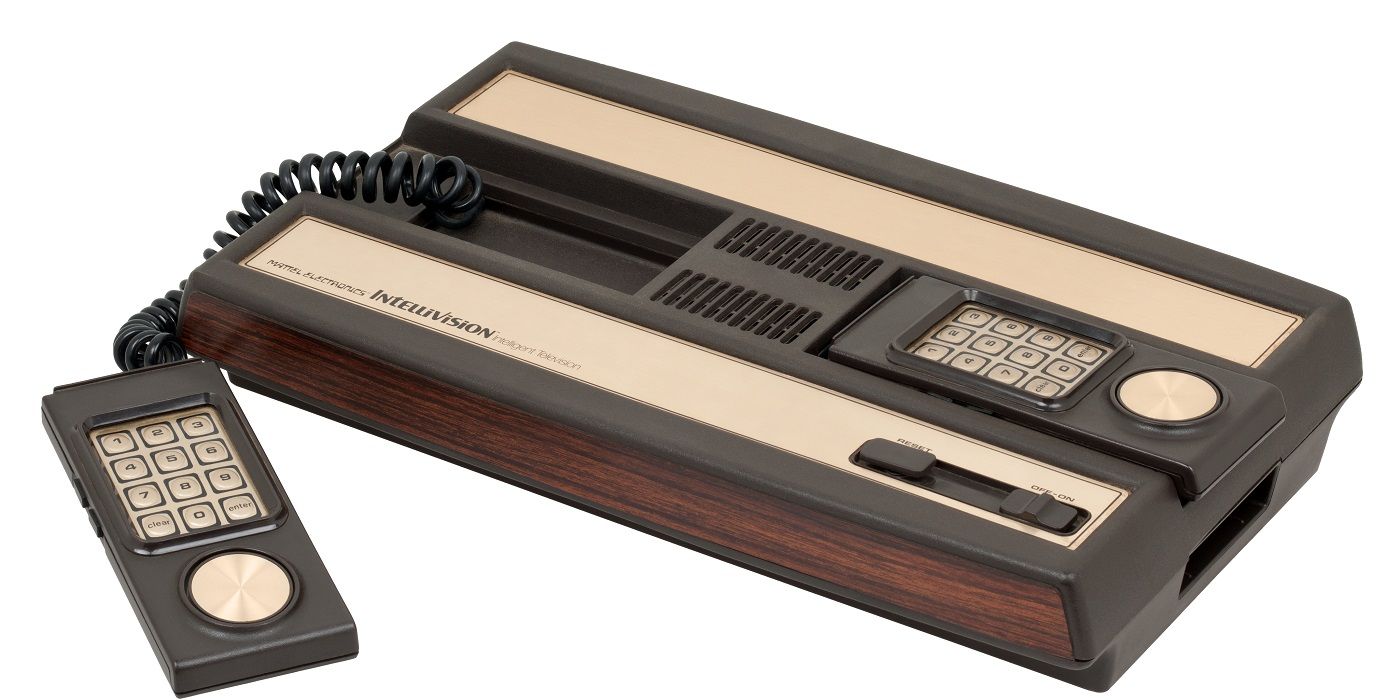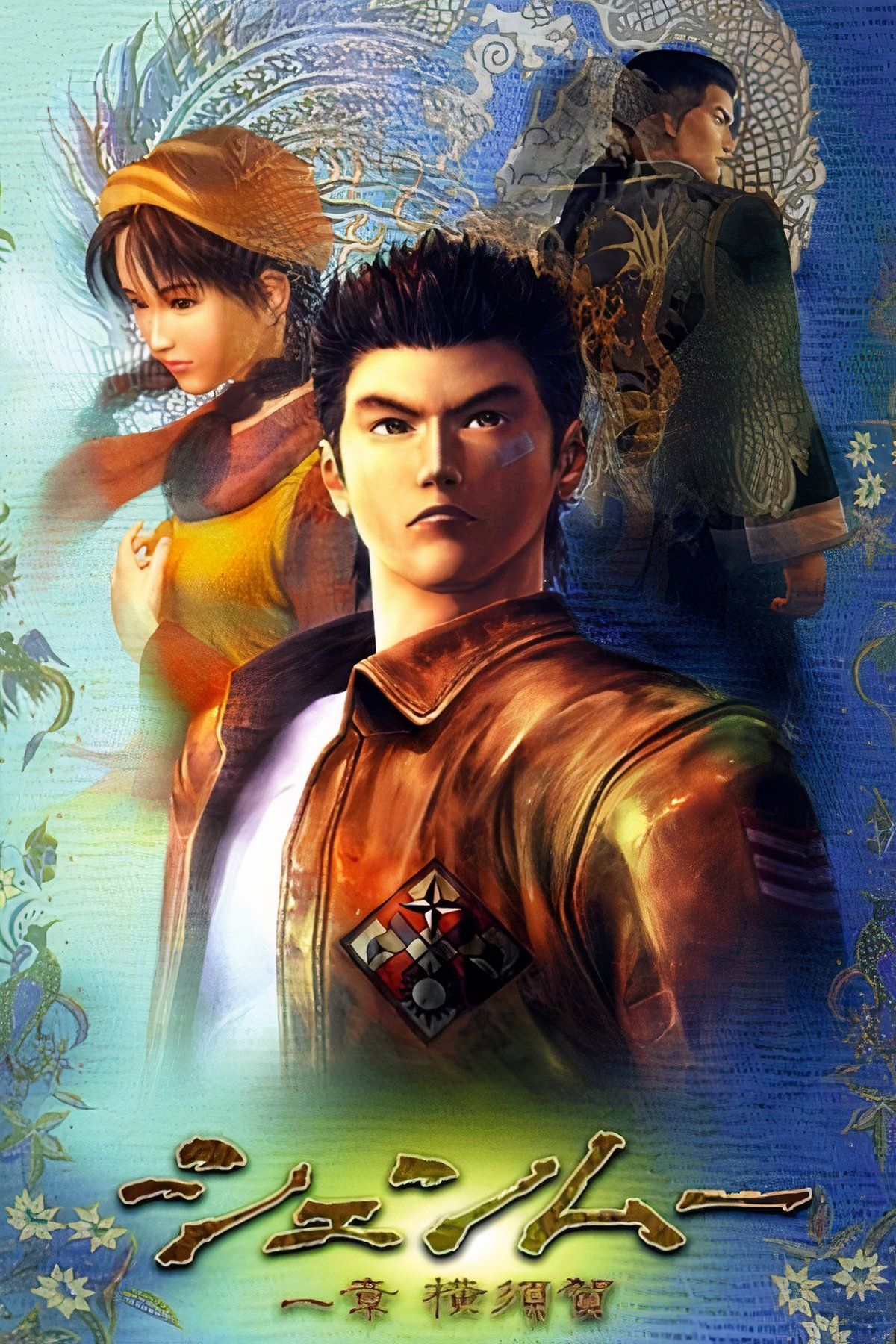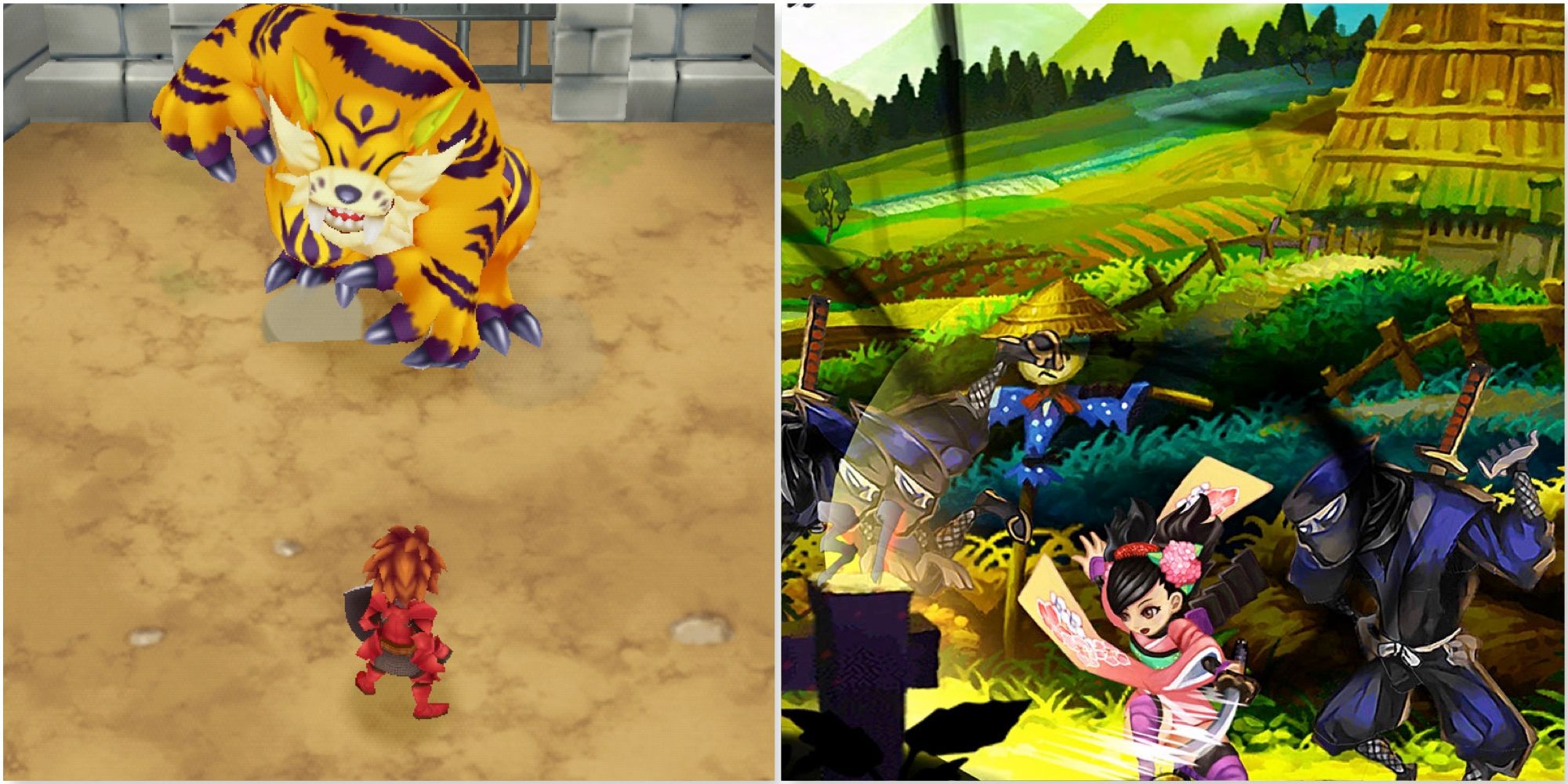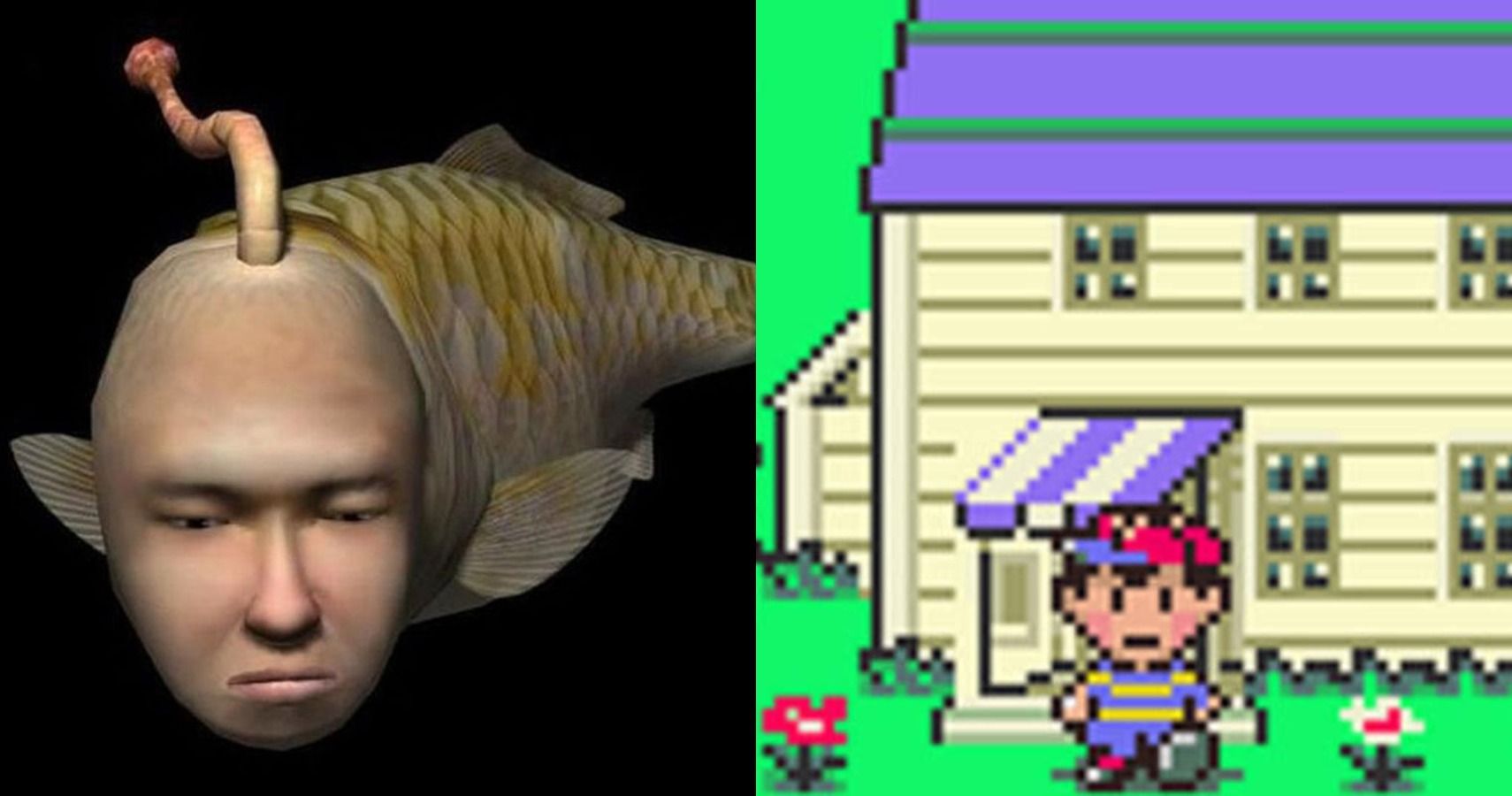Summary
Segagaga on Dreamcast was a satirical RPG about saving Sega, featuring genre chaos and quirky mechanics.
Pocket Kingdom on N-Gage was a trailblazing mobile MMO with deep gameplay mechanics and global interactions.
Immercenary on 3DO was a cyberpunk FPS with unique combat mechanics and eerie visuals ahead of its time.
When a console flops, it usually takes a lot of good games down with it. Sometimes, it’s due to poor marketing. Sometimes, it’s the hardware being way ahead—or behind—its time. And sometimes, the stars just don’t align. But for the few diamonds that manage to sparkle on a sinking ship, it’s like finding a secret level in a game no one told you existed. These are the games that didn’t just rise above the mess—they made the mess worth digging through.

Related
10 Obscure Video Game Consoles You Never Knew Existed
PlayStation. Super Nintendo. Xbox. We all know the major gaming systems from our lifetimes but there are some obscure ones you may not be aware of.
Here’s a look at several incredible games that were buried by the failure of the consoles they launched on, ranked from “surprisingly great” to “this game deserved a monument.”
7
Segagaga – Sega Dreamcast
The Game Where You Literally Try to Save Sega From Bankruptcy
On paper, Segagaga sounds like a fever dream. In practice, it somehow manages to be even weirder. Released exclusively in Japan in 2001 near the end of the Dreamcast’s life cycle, this satirical RPG put players in charge of a fictionalized version of Sega, tasked with saving the company from being destroyed by a rival conglomerate named DOGMA. It’s less a game and more a self-roast—an unfiltered look at Sega’s own missteps, complete with parodies of their franchises, digs at the console wars, and a healthy dose of existential corporate dread.
What’s wild is how committed it is to the bit. The opening hours play like a traditional RPG, but soon devolve into genre chaos: management sim mechanics, shoot-em-up sequences, and even PowerPoint-style meetings. One battle has players win over disgruntled employees by hurling inspirational phrases instead of attacks. Another has Sonic locked away in a cage for being “outdated.” No one was safe, and Sega was clearly in on the joke.
The Dreamcast’s commercial failure meant Segagaga never got the spotlight it deserved, but in retrospect, it’s almost poetic. A self-aware love letter to a company on the edge, only accessible to the most loyal fans who stuck around until the bitter end.
6
Pocket Kingdom: Own the World – N-Gage
The World’s First Mobile MMO Was on the N-Gage, and Somehow It Slapped
Most people remember the N-Gage for being the Taco Phone that tried (and failed) to be both a gaming handheld and a cellphone. But tucked into its library was a game that did something no one saw coming in 2004: Pocket Kingdom: Own the World became the first mobile MMO to offer persistent online play. It had cross-player interactions, economy-building, asynchronous battles, and live market trading—all on a phone that you had to hold sideways to talk on.
Players managed a crew of looters and sent them out on automated raids, with battles and encounters playing out in real time while they were away. The game blended idle mechanics with resource management and surprisingly deep equipment customization. Guild rivalries played out via global leaderboards, and rare loot drops became digital status symbols before that was even a thing.
What makes it more impressive is how it functioned on Symbian OS with a D-pad. It had no right to be this fun, but it was—and if it had launched on literally any other platform, Pocket Kingdom would be considered a trailblazer rather than a relic.
5
Immercenary – 3DO
A Cyberpunk FPS That Tried to Predict VRMMOs… In 1995
Platform(s): 3DO
Released: 1995
Developer(s): Five Miles Out
Genre(s): RPG, FPS
There’s a strange melancholy to Immercenary, and not just because of its digital-dystopia setting. Released for the 3DO in 1995, it drops players into a virtual world called PERFECT, where people have uploaded their consciousness to escape a dying planet. The goal is to climb the ranks and defeat the system’s ruler, but everything—from the floating enemies to the grainy full-motion video—feels off in a way that’s hard to shake.
Technically a first-person shooter, Immercenary blends RPG mechanics with resource-based combat, where every action drains the player’s energy pool. Positioning, target prioritization, and careful planning matter way more than reflexes. And while its visuals haven’t aged gracefully, the weird, dreamlike art direction somehow makes it feel timeless in its own, unsettling way.
The 3DO’s price tag and chaotic launch schedule doomed it commercially, but Immercenary still managed to make a mark on anyone who touched it. It was Tron meets System Shock, with just a pinch of Lawnmower Man weirdness thrown in for good measure.
4
Gates Of Zendocon – Atari Lynx
The Killer App of a Console That Was Dead on Arrival
Platform(s): Atari Lynx
Released: 1989
Developer(s): Epyx
Genre(s): Shooter
The Atari Lynx might’ve been the first handheld with a color screen, but it also had the battery life of a sneeze and a marketing budget that couldn’t keep up with Game Boy’s juggernaut status. Still, Gates of Zendocon made a compelling case for why the Lynx deserved better. This 1989 side-scrolling shooter featured 51 interconnected levels, alien allies that helped in combat, and multiple endings based on player choices, on a handheld, before most consoles even dared to try it.
3:28

Related
The Rarest Games Consoles (& How Much They’re Worth)
Certain consoles have become very expensive collector’s items. Here are some of the rarest video game consoles and how much they’ll set you back.
The levels weren’t just palette swaps either. Some had gravity shifts, others were maze-like gauntlets filled with traps. Each world ended with a warp gate, and players could choose different routes, creating a quasi-branching narrative that made replays genuinely rewarding. The eerie soundtrack, surprisingly smooth framerate, and organic enemy designs made it feel more advanced than a lot of early Genesis shooters.
If Gates of Zendocon had landed on Game Boy, it would’ve been a classic. Instead, it became a footnote in a console war that Atari never really showed up for.
3
Shenmue – Sega Dreamcast
The Game That Changed Open Worlds Forever, But Only on a Console That Couldn’t Stay Afloat

Shenmue
Released
December 29, 1999
ESRB
t
Shenmue wasn’t just ahead of its time—it was from a completely different timeline. Released in 1999, this was Sega’s moonshot, their magnum opus. With a production budget of around $47 million, it became one of the most expensive games ever made, and it shows. Every drawer could be opened, every NPC had a name and a schedule, and weather patterns shifted in real time.
Set in Yokosuka in 1986, players stepped into the shoes of Ryo Hazuki, a teenage martial artist investigating his father’s murder. But the genius of Shenmue wasn’t in the story—it was in the world. Time moved forward whether Ryo acted or not, meaning players had to plan around store hours, bus schedules, and their own patience. They could feed stray cats, practice their moves in parking lots, and waste hours playing full versions of Hang-On and Space Harrier at the local arcade.
The Dreamcast’s collapse meant Shenmue never became the franchise Sega envisioned, but it laid the groundwork for open-world design in ways that GTA 3 would popularize years later. For those who played it, though, the wait for that elusive forklift job to start was never a chore—it was part of the magic.
2
Muramasa Rebirth – PS Vita
This Gorgeous Action-RPG Was the PS Vita’s Crown Jewel
Muramasa Rebirth feels like a moving painting where every brushstroke bleeds combat finesse. An enhanced port of the Wii’s Muramasa: The Demon Blade, it landed on the PlayStation Vita in 2013 with crisper visuals, refined controls, and all-new DLC storylines that added four playable characters. But what really made it shine was how effortlessly it used the Vita’s gorgeous OLED screen. Every sword swing left trails of light, and every blossom in the background felt alive.

Related
8 Great PS Vita Exclusive Games That Need Remasters
From shooters to RPGs, these PS Vita games should live on, and it’s high time they received their well-deserved remasters.
Players controlled either Momohime or Kisuke, two warriors tied to cursed blades, exploring a mythological version of Edo-period Japan. The combat was fast, fluid, and addictive, encouraging players to juggle swords mid-air while dodging like a sidescrolling Dante. The game’s crafting system, which involved forging demonic blades with unique special moves, gave the hack-and-slash combat real depth.
The Vita itself never got the audience it deserved, which meant Muramasa Rebirth got lost in the shuffle. But among those who played it, it’s remembered as one of the handheld’s definitive experiences—and a reminder that even doomed hardware can produce something timeless.
1
Panzer Dragoon Saga – Sega Saturn
A JRPG Masterpiece Trapped on a Console That Almost No One Owned
There are rare games, and then there’s Panzer Dragoon Saga. Released in 1998 during the final gasps of the Sega Saturn, it’s not just considered one of the greatest RPGs of its generation—it’s also one of the rarest. Only around 20,000 copies were produced for North America, and Sega disbanded Team Andromeda shortly after launch. Yet somehow, this four-disc epic still managed to become legendary.
Set in the same post-apocalyptic world as the earlier Panzer Dragoon rail shooters, the game ditched linear levels in favor of full 3D exploration, blending real-time and turn-based combat into a system that still feels innovative decades later. Players rode a morphing dragon through desolate wastelands, uncovering secrets of a lost civilization while managing movement and attack angles mid-battle. The story was haunting, full of cryptic lore and quiet tragedy, and backed by a soundtrack that could’ve carried an Oscar-winning film.
The Saturn’s botched Western launch, weak third-party support, and general mismanagement meant almost no one had a chance to play Panzer Dragoon Saga when it mattered. Today, it exists mostly in memory, emulation, and collector circles—but for those who experienced it, no other RPG has quite matched its tone, ambition, or atmosphere.

More
10 Weird Console Exclusives You Totally Forgot About
Console exclusives are a big deal, but they can get pretty weird trying to stand out. Today we’re looking at some of the weirdest of those games.

